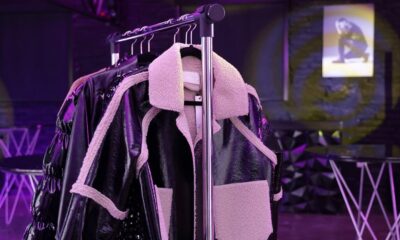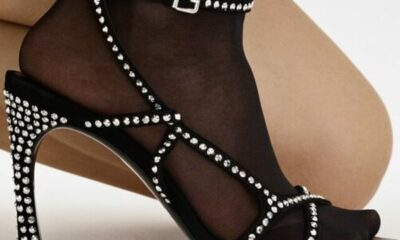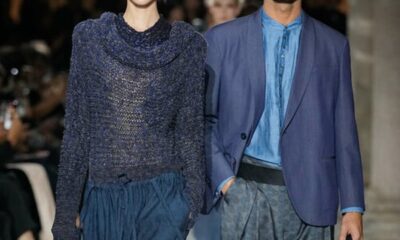Fashion
Louis Vuitton: Welcome to the new refinement
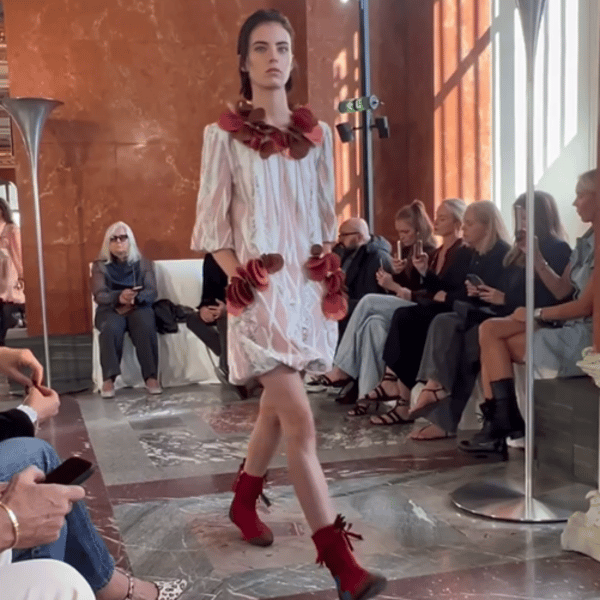
Published
September 30, 2025
Louis Vuitton, the luxury travel marque par excellence, staged the first major influential show of this Paris Fashion Week on Tuesday, wowing with a refined collection presented inside a royal apartment within the Louvre.
And not just any flat — in fact, the grandiose summer apartment of Anne of Austria, a lavishly finished neoclassical space with views out to the Seine.
All magisterially redecorated, as Vuitton’s women’s creative director Nicolas Ghesquière worked with set designer Marie-Anne Derville to create an apartment that riffed on French taste from the 18th century until today — from a salon to a lounge to a bathroom.
“I wanted the serenity that you feel in the comfort of your own home. Today, you can dress with sophistication at home. It’s not just about wearing jogging pants,” explained Ghesquière in a post-show interview.
And like the apartment, this Spring-Summer 2026 collection was highly eclectic: blending kicky fabric tops, tapestry details, carpet-fabric shoes, and brushed silk — an 18th-century French technique where it begins to look like animal skin.
Though Ghesquière didn’t directly reference Anne of Austria’s wardrobe, there was an air of contemporary courtier about the clothes — from leggings cut like britches, or shirts with aristocratic six-inch collars, to striking lace demoiselle gowns and a magnificent scarlet satin bouffant bubble coat.
All manner of off-the-shoulder togas added to the sense of the event, as did damask dhotis. Paired with short paisley tanks, all suggested an exotic dinner party that would be marvelous to attend.

Adding to a sense of mystery, a major shout-out to the millinery — superb Doges’ miters or Pashas’ turbans. Being Ghesquière, the designer leavened many looks with futuristic sportswear: technical palazzo pants or high-tech sneakers.
Nicolas was clearly influenced by the colors of the queen’s apartment. The rose-checked marble floor was restored in the 1970s; below 17th- and 18th-century frescoes and Egyptian bas-reliefs. And even if he claimed not to be influenced by the wardrobe of Anne — the mother of Sun King Louis XIV — there was a hint of Rubens’ famed portrait of Anne in a diaphanous silk gown with a spiky collar.
“It’s a multicultural proposition,” joked the French designer, attired in his classic dressed-down style — worn black jeans and a pale blue jeans jacket.
Though often grand, the collection was never uptight. Far from it — with perfectly draped body-con gowns and superb tailoring made in soft knitwear.
Whatever else one can say about Ghesquière, he certainly has great imagination — and timing. In a season marked by the demise of quiet luxury and the renaissance of refinement, riffing on a queen’s apartment seemed smart.
Original and highly diverse — just like the set, which blended artist Robert Wilson; Georges Jacob, master cabinetmaker of the 18th century; 1930s Art Deco by Michel Dufet; ceramic sculptures by Pierre-Adrien Dalpayrat; and even furniture designed by Derville herself.

Among which sat all the senior brass of LVMH, owner of Vuitton, the world’s largest luxury brand; a pack of influencers; and several proper movie stars — among them Jennifer Connelly and Emma Stone.
And a sense of empowerment. Like Anne. No slouch when it came to politics, Anne outmaneuvered her rivals to become the sole regent of Louis XIV when he became king aged just four. Then she determinedly suppressed the Fronde — the greatest revolt against the French monarchy prior to the Revolution — doing so with the help of Italian-born Cardinal Mazarin. Then again, LVMH’s patron knows a thing or two about hiring Italians. His CEO at Vuitton is Italian-born Pietro Beccari.
All told, even if Vuitton is the luxury brand synonymous with travel, and this was a collection devoted to home, the collection was still very much a fashionable voyage, with flights of fantasy that broke into new stylistic terrain.
The soundtrack gave the whole show a certain grandeur: Cate Blanchett slowly declaiming the words to David Byrne’s song “This Must Be the Place” from the band Talking Heads, though set to music composed by Tanguy Destable.
“Home — it’s where I want to be,” wrote Byrne, which doesn’t seem such a bad idea.
Copyright © 2025 FashionNetwork.com All rights reserved.
Fashion
Mexico’s apparel sourcing from Asia-Pacific tops $4 bn in 3Q 2025

Between January and September ****, Mexico imported apparel worth $*.*** billion, covering *.*** billion garment pieces. Of this, *.*** billion pieces—equivalent to **.** per cent of total import volume—originated from Asia-Pacific suppliers, according to *fashion.com/market-intelligence/texpro-textile-and-apparel/” target=”_blank”>sourcing intelligence tool TexPro. While the value share improved from **.** per cent in the corresponding period of ****, the import volume dipped slightly from *.*** billion pieces to *.*** billion, indicating a higher average unit value as buyers shifted towards higher-value or better-quality product categories.
In comparison, apparel imports in the first nine months of **** were $*.*** billion (*.*** billion pieces), of which the Asia-Pacific region accounted for $*.*** billion or **.** per cent. On a full-year basis, Mexico imported apparel worth $*.*** billion in ****, including $*.*** billion from the region (**.** per cent share). The annual trend suggests that Asia-Pacific’s contribution has consistently remained close to ** per cent since ****, when total imports stood at $*.*** billion, followed by $*.*** billion in **** reflecting sustained reliance on Asian hubs for mass-market fashion, basics, and fast-moving apparel categories.
Fashion
India’s textile industry eyes full value addition after QCO removal
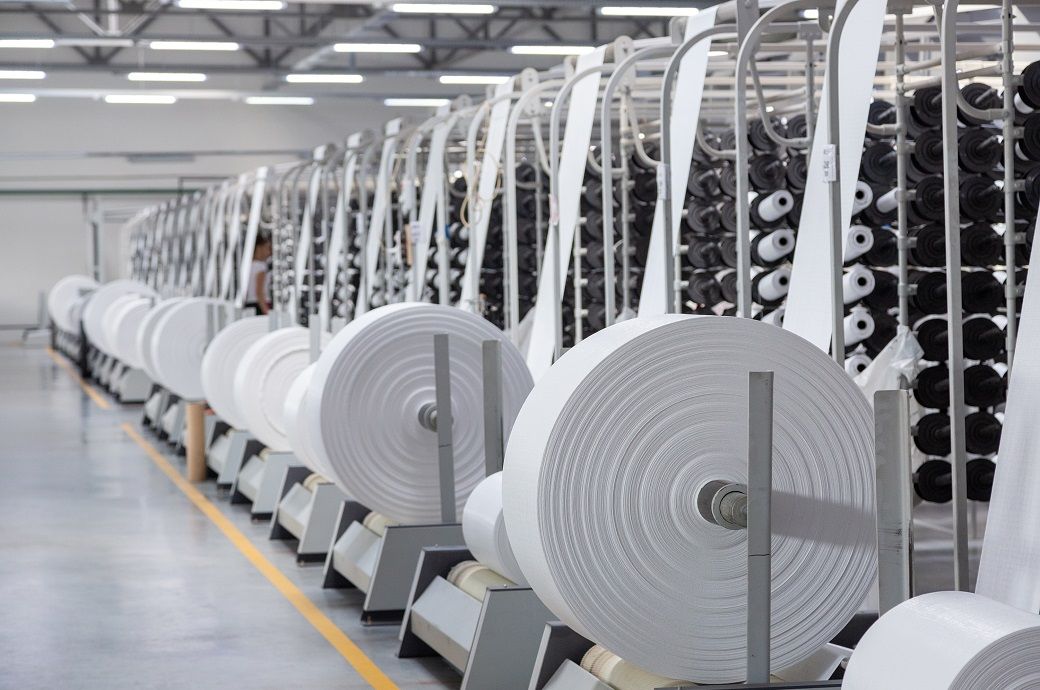
R K Vij, secretary general of the Polyester Textile Apparel Industry Association (PTAIA), told Fibre2Fashion, “India has taken a bold step making Indian textile products competitive in the global market. The QCOs earlier led to increased raw material prices of the entire textile value chain affecting the growth of Indian MMF industry, both in terms of domestic growth as well as export competitiveness. The apparel and textile sector essentially uses two kinds of raw materials. Any non-tariff barrier like QCOs, anti-dumping duty on the basic raw materials should not be there but the same could be put on the value-added products like fabrics and garments so that the import of these value-added products could be restricted.”
India’s removal of QCOs on polyester value chain products has boosted industry confidence, with leaders saying it will lower raw material costs, improve global competitiveness, and support MMF-led growth.
SIMA and PTAIA leaders welcomed the move, urging similar action for viscose staple fibre and filament yarn to capture emerging global market opportunities.
“With the phasing out of QCOs, Indian textile industry will be able to sustain its fullest growth potential not only in the domestic market but also in the most competitive global markets with the availability of raw materials till the stage of fibre and yarn at internationally competitive prices”, Vij stated.
Previously, the rapid rise in QCOs increased compliance costs, caused delays, and led to supply chain disruptions for the MSME sector. However, the removal of QCOs on textile products and their raw materials is expected to ease compliance burdens and positively impact industrial supply chains.
Durai Palanisamy, chairman of the Southern India Mills’ Association (SIMA), thanked the government for removing the QCOs, stating that this path-breaking reform marks a major milestone in positioning India as a global hub for manmade fibre (MMF)-based textiles and apparel. In a statement, he noted that removing the QCO on terephthalic acid and ethylene glycol—key raw materials for manufacturing polyester fibre—is a welcome move that will improve raw material availability and boost competitiveness. Overall, the decision is expected to accelerate growth across the MMF textile value chain, including yarns, fabrics, garments, made-ups, and technical textiles.
The SIMA chairman further observed that easing QCOs will streamline imports of polyester and its raw materials, ensuring uninterrupted supply to spinners, weavers, and processors. Competitive imports are likely to stabilise domestic prices, reducing cost pressures on downstream manufacturers and exporters.
He also appealed to Prime Minister Narendra Modi to remove the QCO imposed on viscose staple fibre (VSF) and filament yarn, which must be made available at internationally competitive prices and in an uninterrupted manner to seize emerging global market opportunities.
Fibre2Fashion News Desk (KUL)
Fashion
MS Printing Solutions presents waterless digital systems at ITMA ASIA

The companies presented systems that merge MS machinery, dryers and software with JK Group’s high-performance inks to create a streamlined, resource-efficient process tailored for modern textile production.
MS Printing Solutions and JK Group showcased advanced sustainable digital textile printing technologies at ITMA ASIA + CITME Singapore 2025, featuring a fully integrated, waterless pigment printing workflow.
The system minimises water, chemical, and energy use, improves efficiency, supports on-demand production, and helps manufacturers meet global sustainability and profitability goals.
A key highlight was the waterless pigment printing process, which removes the need for traditional steaming and washing. This approach sharply cuts water and chemical usage while lowering energy demand and operational costs. By simplifying production, the technology supports manufacturers in reducing environmental impact and progressing towards global sustainability standards required by international supply chains.
The integrated system also supports near on-demand production, enabling mills to align output more closely with actual demand. This helps reduce overproduction and the billions of garments wasted every year. MS Printing Solutions further demonstrated enhanced workflow efficiency through intuitive software that speeds up calibration, improves colour yield and delivers higher brightness.
Explaining how their solutions simplify operations while lowering production costs, Massimo Cavazzini, global sales lead at JK Group and MS Printing Solutions, told Fibre2Fashion in an earlier interview, “Choosing our solution means choosing digital printing—bringing customisation, flexibility, and efficiency to the forefront. With no limits on print runs and fewer production steps, manufacturers benefit from shorter time-to-market and lower costs. We have also engineered an advanced process monitoring system to ensure long-term ink reliability, maximising profitability for our clients. Our global vision is strategically designed to support local markets and customer preferences, while enhancing efficiency, productivity, and service through operational synergies. In essence, you print what you want, when you want, and only pay for what you need.”
Fibre2Fashion News Desk (HU)
-

 Entertainment1 week ago
Entertainment1 week agoChina unveils£5.4 bn Fujian, its most advanced aircraft carrier yet
-

 Politics1 week ago
Politics1 week agoIDF lawyers warned of possible Gaza war crimes: US intel findings
-

 Entertainment1 week ago
Entertainment1 week agoRobert Pattinson jokes about competing with Gen Z
-

 Sports1 week ago
Sports1 week agoIsraeli cycling team loses top sponsor despite honoring request to remove country from name
-

 Tech1 week ago
Tech1 week agoThe Government Shutdown Is a Ticking Cybersecurity Time Bomb
-
Sports6 days ago
College football winners and losers: The catch of the year saves Indiana
-

 Business7 days ago
Business7 days agoMore than 1,000 flights cancelled as US air traffic cuts enter second day
-
Sports1 week ago
The next Tom Brady? No, Drake Maye is a different breed.


